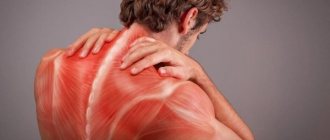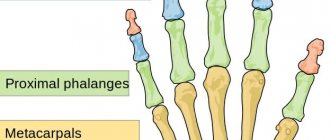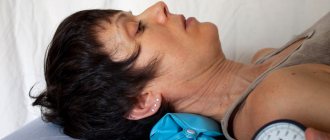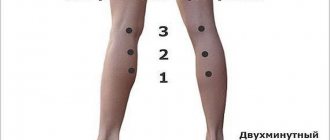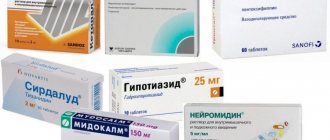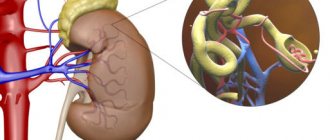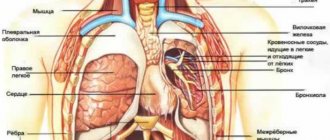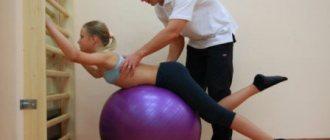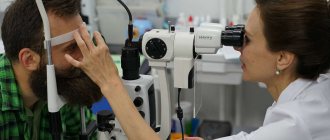29.01.2021
Myositis is inflammation of the muscles, accompanied by local pain during movement or palpation. Trying to protect the affected area on its own, the body increases muscle tension, which limits joint mobility, and subsequently weakness and atrophy of the damaged muscle may develop.
Muscle inflammation does not stop at one location or cause. Myositis often occurs as a consequence of infectious and autoimmune diseases. The course of the disease can be either acute or chronic, with skin rashes. With local infection, there is a high probability of development of purulent processes in the muscles.
Every person suffers from myositis at least once in their life. But in most cases, the disease remains undiagnosed, because the patients themselves define the pain as an exacerbation of osteochondrosis of the cervical or thoracic regions. Severe forms of myositis require long-term treatment and hospitalization, so you should not turn to self-diagnosis and self-medication for myositis.
Causes
Viral infectious diseases are a common cause of muscle inflammation. For example, influenza or ARVI. Myositis can occur against the background of a bacterial or fungal infection. In this case, the inflammatory process begins to develop as a result of the activity of microorganisms and their metabolic products.
More rare causes of myositis include:
- autoimmune diseases: accompanied by myositis of the most severe form;
- systemic diseases: accompanied by myositis of moderate severity;
- parasitic infections;
- exposure to toxic substances (alcohol, cocaine);
- taking medications: the lesion is not always accompanied by inflammation and can be attributed to both myositis and myopathy;
- hypothermia;
- injury;
- excessive loads during sports with poorly trained muscles;
- uncomfortable body position and prolonged stress on the same muscle group due to professional activities (pianist, violinist, PC operator, driver, etc.);
- open injury;
- chronic infection or infection as a result of violation of sanitary standards when administering an intramuscular injection.
Treatment
Treatment for myositis depends on the cause of the disease.
The inflammatory (autoimmune) diseases that cause myositis often require treatment with drugs that suppress the immune system, including:
- Prednisone
- Imuran
- Methotrexate
Myositis caused by an infection, usually viral, does not require treatment. Myositis caused by bacteria is not common and requires treatment with antibiotics (up to intravenous administration in order to avoid a dangerous condition for the body such as sepsis).
Although acute necrosis of skeletal muscle is rare with myositis, if rhabdomyolysis is present, it is necessary to hospitalize the patient because large fluid infusions must be administered to prevent kidney damage.
Drug-related myositis is treated by stopping the medications. In cases of myositis caused by statin drugs, muscle inflammation decreases within a few weeks of stopping the drug.
Classification
Myositis has several forms:
- infectious non-purulent myositis: causes general weakness and severe muscle pain. The prerequisites are infectious diseases such as syphilis, tuberculosis, brucellosis, influenza and enteroviral diseases;
- acute purulent myositis: the affected area has swelling and severe pain, necrosis develops in the muscle tissue and pus accumulates. The prerequisites are a chronic purulent process, for which myositis is a manifestation of a complication. High body temperature, leukocytosis and chills may occur;
- myositis due to parasitic infections: the muscles are tense and react painfully, the affected area is swollen. This form of myositis is a consequence of toxic-allergic reactions with characteristic symptoms: malaise, fever, leukocytosis;
- myositis ossificans: affected areas - shoulders, hips, buttocks. It occurs as a congenital pathology and as a result of trauma. A feature of the form is the accumulation of calcium salts in muscle tissue, which causes the formation of calcifications and compactions. The development of such myositis is fraught with muscle atrophy;
- polymyositis: one of the severe forms in which a group of muscles is simultaneously affected. The cause of the development of pathology is autoimmune diseases. Polymyositis is especially dangerous for children, as blood vessels, heart, lungs, and skin can be affected. For men over 40 years of age, polymyositis can cause the development of tumors of internal organs;
- Dermatomyositis (Wagner's disease): The disease affects both skeletal and smooth muscles, including the skin and internal organs.
Myositis has a large number of varieties and an equally diverse list of causes.
Diagnostics
A doctor may suspect myositis based on symptoms such as muscle weakness, pain, and other symptoms consistent with myositis. The following are used in the diagnosis of myositis:
Blood tests. Elevated levels of muscle tissue enzymes (eg, creatine kinase) may indicate muscle tissue damage. Autoantibody tests can identify autoimmune disease.
Magnetic resonance imaging (MRI). A scan using a powerful magnet and a computer produces images of the muscles. MRI analysis helps identify areas of muscle damage currently and over time.
Electromyography (EMG). By inserting needle electrodes into the muscles, the doctor can test how the muscles respond to electrical stimulators and nerve impulses. EMG allows you to identify muscles that are weak or damaged by myositis.
Muscle biopsy. This is the most accurate analysis for diagnosing myositis . The doctor identifies the weak muscle, makes a small incision, and removes a small piece of muscle tissue to examine the tissue under a microscope. A muscle biopsy provides a definitive diagnosis of myositis .
There are many causes of muscle weakness and muscle pain more common than myositis. And therefore, the diagnosis of myositis may not be made immediately, but after some time.
Symptoms
Despite the variety of forms and causes of myositis, there are symptoms that clearly indicate the development of the disease. The presence of myositis can be judged if:
- aching pain is felt in the muscles, which intensifies with palpation and movement;
- in some cases, swelling and redness appear in the affected area;
- elevated body temperature, which lasts for a long time and is accompanied by chills, headache and an increased number of leukocytes in clinical analysis (this indicates inflammatory processes);
- in some cases, compactions form that can be easily felt.
The course of myositis can develop in both acute and chronic forms. Moreover, in the absence or incorrect treatment, it can easily change one for another.
Acute myositis develops when:
- hypothermia;
- muscle overstrain;
- injury.
Infectious and toxic myositis does not manifest itself with clear symptoms at the beginning and proceeds in a chronic form until favorable circumstances.
Chronic myositis develops along a curve, periodically subsiding and resuming. The appearance of pain is influenced by weather, low temperatures, and prolonged stress in a sedentary position.
Nutrition for myositis
The diet should consist of nutritious but easily digestible dishes. Foods high in vitamins A, B, C, D, E, PP help fight inflammation. The daily menu should include:
- fresh vegetables and herbs;
- sweet and sour fruits - oranges, apples, plums, kiwi;
- foods rich in salicylates - honey, vegetable oils, legumes, nuts, black and green tea, peppers;
- boiled and stewed beets, carrots, potatoes;
- decoctions of beneficial herbs;
- sea fish.
In addition to clean water, it is recommended to consume more vitamin drinks: juices, fruit drinks, homemade compotes. The total volume of liquid should reach 2 liters.
For spasmodic pain, it is recommended to include foods rich in calcium, magnesium, and zinc in the diet. These elements are found in cereals, dairy products, green crops, liver, pumpkin, and chicken eggs.
Our doctors
Belikov Alexander Valerievich
Neurologist, Candidate of Medical Sciences
21 years of experience
Make an appointment
Novikova Larisa Vaganovna
Neuropathologist, Candidate of Medical Sciences, doctor of the highest category
Experience 39 years
Make an appointment
Pankov Alexander Rostislavovich
Neurologist
40 years of experience
Make an appointment
Injuries
Severe pain can occur when muscle fibers and tendons are torn. This usually happens if the load is excessive and the muscles are not prepared for it1. But they can also be damaged by sudden movements3. Unlike “ache” due to muscle overwork, pain due to injury occurs immediately, at the peak of the load3.
It should be remembered that even a small, but untreated injury can cause an even more severe sprain3. Therefore, if you experience pain during physical activity, be sure to consult a doctor to rule out a serious injury.
to come back to the beginning
How does the disease manifest itself?
In primary forms, the first signs of the disease usually appear in childhood or adolescence. A typical symptom that may indicate the disease in a child is muscle weakness. This feature is characteristic of all forms. Weakness is usually symmetrical, meaning it occurs in symmetrical muscles. In the initial stages, weakness may be insignificant, but gradually its severity increases.
As the disease progresses, the quality of life decreases: even habitual loads become difficult and difficult for the patient to perform. Difficulties appear when walking or climbing stairs. Due to muscle dystrophy, posture may be disrupted and curvature of the spine may appear, for example, lumbar lordosis, kyphosis, scoliosis, which progress over time. In this case, the patient’s head and stomach protrude forward, the shoulders drop, and wing-shaped shoulder blades are formed3.
When the proximal muscles, located closer to the center of the body, are affected, difficulties arise with rising from a chair, getting out of the bath, climbing stairs, combing hair, or shaving. A “duck” gait is observed - the patient moves, swaying to the sides. With weakness in the hands, a person has difficulties performing highly differentiated work (writing, playing musical instruments, turning, etc.). Weakness of the feet is manifested by the formation of a hollow foot, a flopping gait. In some forms, for example, Nemalin myopathy, sometimes with Pompe disease, weakness of the respiratory muscles appears, which leads to an increased risk of pulmonary infections. In addition, the oxygen supply deteriorates, which can cause damage to the brain, heart, and other organs4.
Along with muscle weakness, tendon reflexes decrease, muscle spasms or contractions occur, and joint mobility is limited—contracture3.
Prevention of myositis
You can exclude recurrent manifestations of myositis if you pay attention to prevention:
- harden the body, often walk in the fresh air, regularly ventilate the room, conduct contrasting douches with cool and warm water;
- sunbathing, swimming in natural reservoirs in the warm season;
- avoid drafts, protect the body from hypothermia, dress according to the weather;
- exercise in moderation, avoid unnecessary stress on the muscles, start with warm-up exercises;
- when working in an uncomfortable position, take short breaks, perform warm-up exercises for stiff and tired muscles;
- Regularly use the services of a massage room, do a general preventive massage for all muscle groups, massage the back or collar area.
The myositis treatment program includes drug treatment, exercise therapy, physiotherapy, and dietary nutrition. Following the doctor’s recommendations and giving up bad habits speeds up recovery and serves as a preventive measure against relapses.
Diseases of the spine and joints
Muscles react to disruption of the joints4 and vertebrae5 associated with them. Therefore, myalgia is one of the symptoms of diseases of the spine5,11 and joints of the limbs4. For example, with osteochondrosis or scoliosis (curvature of the spine), pain in the neck, chest or lower back is associated with overstrain of the paravertebral muscles5,11. And in advanced cases, when the vertebra compresses the nerve root emerging from the spinal cord, the pain can “radiate” to the arm or leg11.
Often myalgia with osteochondrosis is combined with a feeling of numbness or “crawling goosebumps”. At the moment of acute pain, a person freezes, taking a forced position11.
Rhabdomyolysis
With muscle injuries (more common in athletes), gradual destruction of tissue occurs, this condition is called rhabdomyolysis. This process ultimately ends with the death (necrosis) of cells and the release of toxins into the circulatory system. This disease can cause serious complications and lead to kidney failure. If qualified assistance is not provided, it can result in death.
Possible reasons:
1. Bodily injuries (injuries, beatings, accidents, accidents).
2. Stage 3 and 4 burns.
3. Long surgical operations (more than 8–10 hours).
4. Long-term compression of tissues with impaired blood supply.
5. Electric shocks.
The development can be provoked by: increased loads during training, epileptic seizures, severe muscle spasms, delirium tremens.
It is very difficult to recognize the disease; the manifestations are similar to the symptoms of many diseases; sometimes rhabdomyolysis occurs secretly. Often the correct diagnosis can only be made based on the results of a blood test. In an advanced form, the patient may fall into a coma and die.
Muscle fatigue
In our technological age, many people are gradually forming a new “bad habit”. Spending most of the day in front of a computer screen or holding mobile gadgets in our hands, we may not even notice that we are sitting in a completely uncomfortable and unnatural position. It especially affects the muscles of the shoulder girdle, neck, back and right arm, which is constantly on the computer mouse of office workers1. Staying in one position for a long time or using stereotyped movements can lead to overstrain of the muscles involved, which we feel as soreness1.
